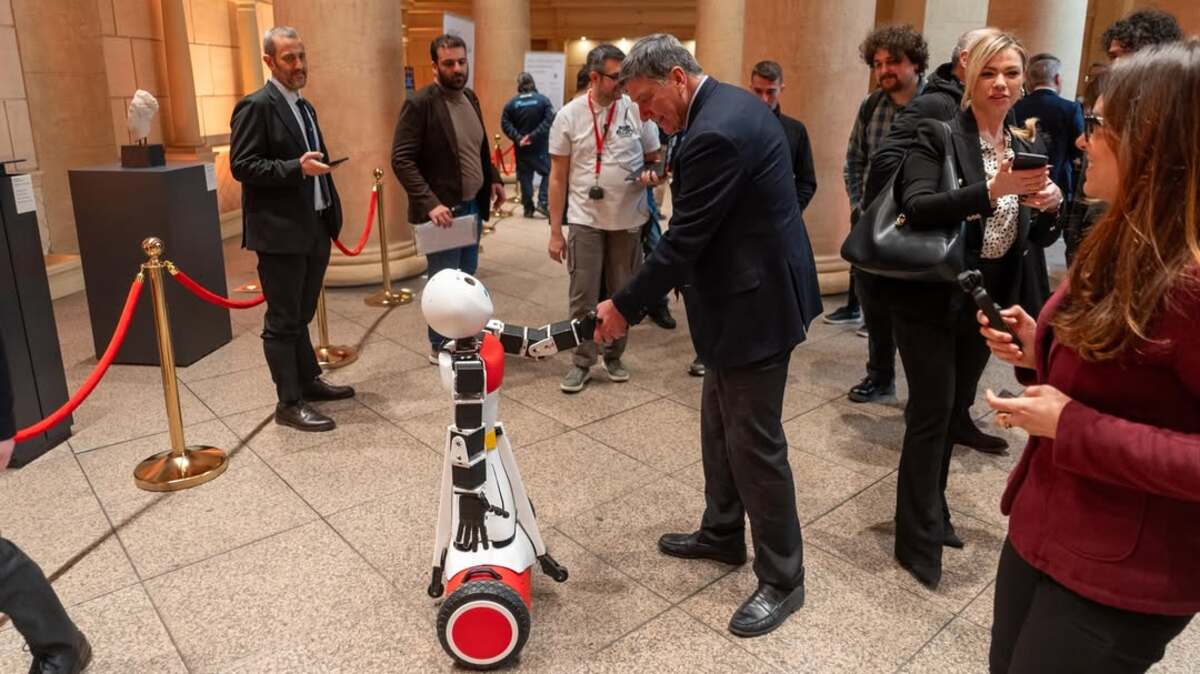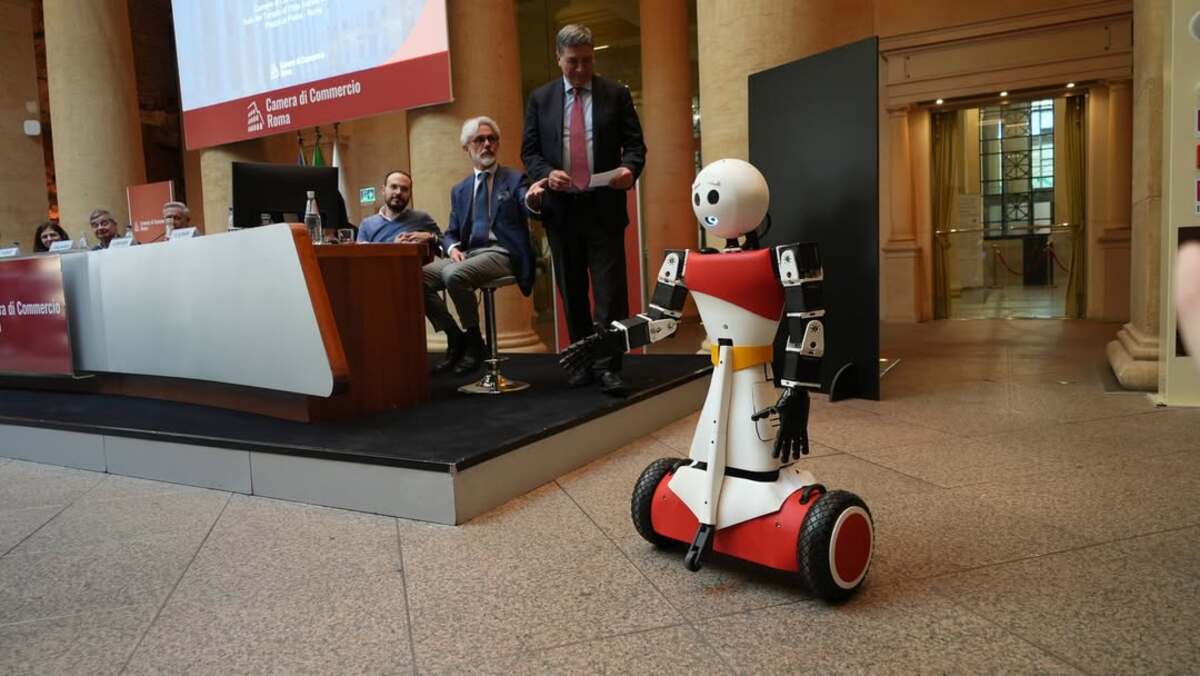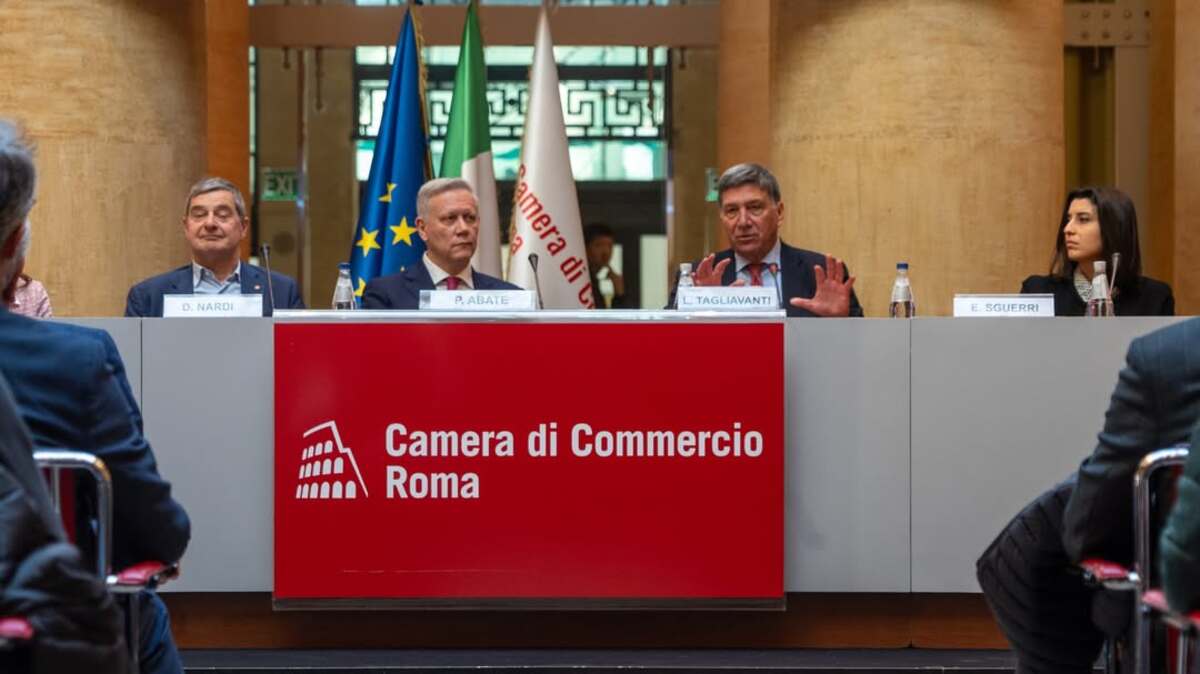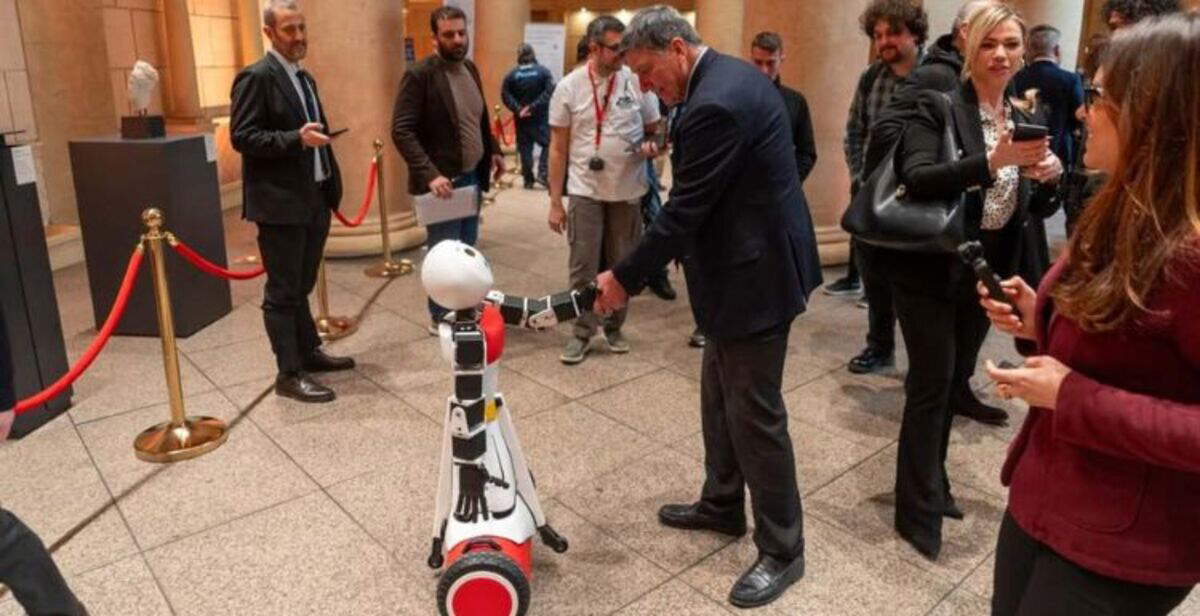Italy’s public administration takes a step forward in the field of innovation with the introduction of ADRIANO, the first employee robot in a public agency. The project, entirely Italian, was developed thanks to the collaboration between four national excellences in the fields of robotics and artificial intelligence, involving a team of more than 30 highly talented engineers, technicians and researchers. An ambitious initiative, which required an investment of 137 thousand euros, becoming a symbol of Italy’s great expertise in technology. ADRIANO will be operational from March 24, 2025 at the Temple of Vibia Sabina and Hadrian, in Rome.
ADRIANO is not just a classic virtual assistant: equipped with computer vision, artificial muscles and robotic hands, he is able to interact with visitors in a natural and safe way. Its advanced technology allows it to express emotions through a sophisticated system of facial expressions, making communication more engaging. The robot will be able to answer questions about the history of Rome in both Italian and English, providing an interactive experience that fits perfectly into the cultural and tourist context of the capital. The initiative was officially presented by the Rome Chamber of Commerce, which stressed the importance of innovation in the public sector.

“Today, 2,000 years later, Hadrian is back as the protagonist of this hall in the form of a robot,” said Rome Chamber of Commerce President Lorenzo Tagliavanti. “The Temple of Vibia Sabina and Hadrian has been able to grasp and renew itself in the transformations that the city of Rome has undergone over time. Hadrian was an innovator, an architect, and today we are presenting a robot named after him. The robot will enhance the history of the Temple and the Rome Chamber of Commerce. Innovation should not be suffered but lived, without fear. We invested 137,000 euros in a project that is a symbol of great Italian expertise.”
“We decided to invest in humanoid robots also with a view to job development,” explains Rome Chamber of Commerce Secretary General Pietro Abate. “We have an integrated approach today because we believe that robots can help produce more by allowing humans to work less.”
The goal, therefore, is twofold: on the one hand to improve the reception and cultural enjoyment of visitors, and on the other to demonstrate the potential of robotics applied to public administration. One of the most revolutionary aspects of ADRIANO is the possibility of a remote experience. Soon, in fact, anyone will be able to virtually visit the Temple of Vibia Sabina and Hadrian by wearing a visor, while the robot will physically move in space, allowing the user to observe the historical site through its eyes. An innovation that could also open new scenarios for the enhancement of Italy’s cultural heritage, making it accessible even to those who cannot visit it in person.
ADRIANO ’s technology represents a synthesis of advances in robotics and artificial intelligence. Thanks to computer vision, he is able to recognize people and objects around him, adapting his behavior in real time. His artificial muscles enable him to make fluid and natural movements, while his robotic hands are designed to ensure safe interactions with visitors. In addition, the ability to express emotions through realistic facial expressions makes the experience of talking with ADRIANO closer to that with a human being. The project is part of a broader context of digitization and innovation within public administration. The use of robots in public environments is not new, but ADRIANO represents the first case in which an artificial intelligence with advanced functions is formally employed as an employee of a public agency. This could pave the way for new applications in the sector, with possible developments in tourist reception, citizen assistance, and service management.


 |
| Rome, the Temple of Vibia Sabina and Hadrian will welcome the public with a humanoid robot |
Warning: the translation into English of the original Italian article was created using automatic tools. We undertake to review all articles, but we do not guarantee the total absence of inaccuracies in the translation due to the program. You can find the original by clicking on the ITA button. If you find any mistake,please contact us.